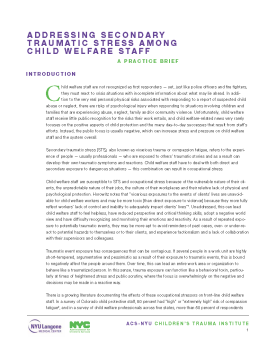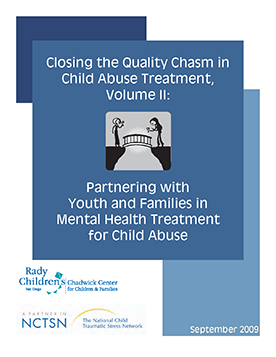
Partner-In Resource
Addressing Secondary Traumatic Stress Among Child Welfare Staff Practice Brief
Type: Fact Sheet
Focuses on addressing secondary traumatic stress experienced by child welfare staff, easing children’s transitions into foster care, and working with parents who have been impacted by trauma.

